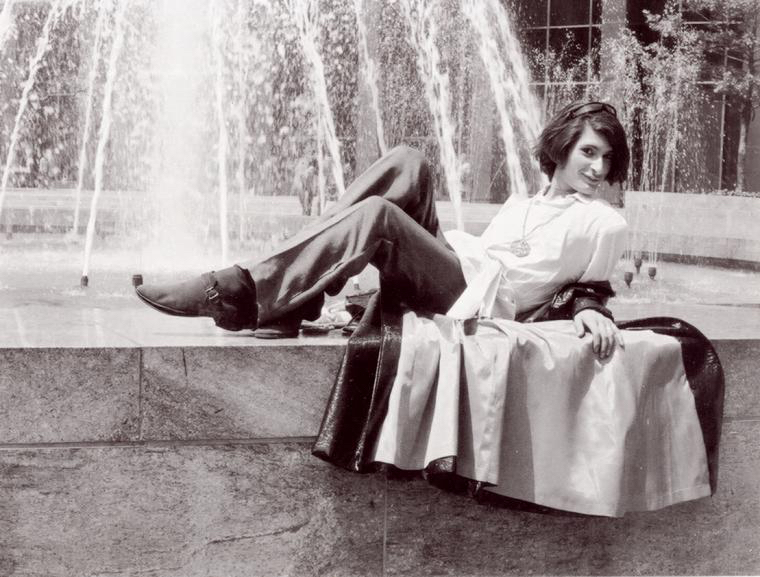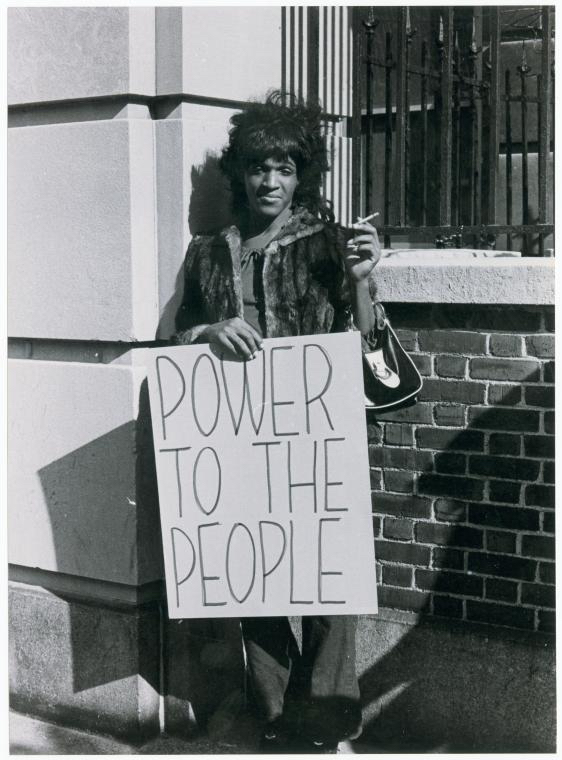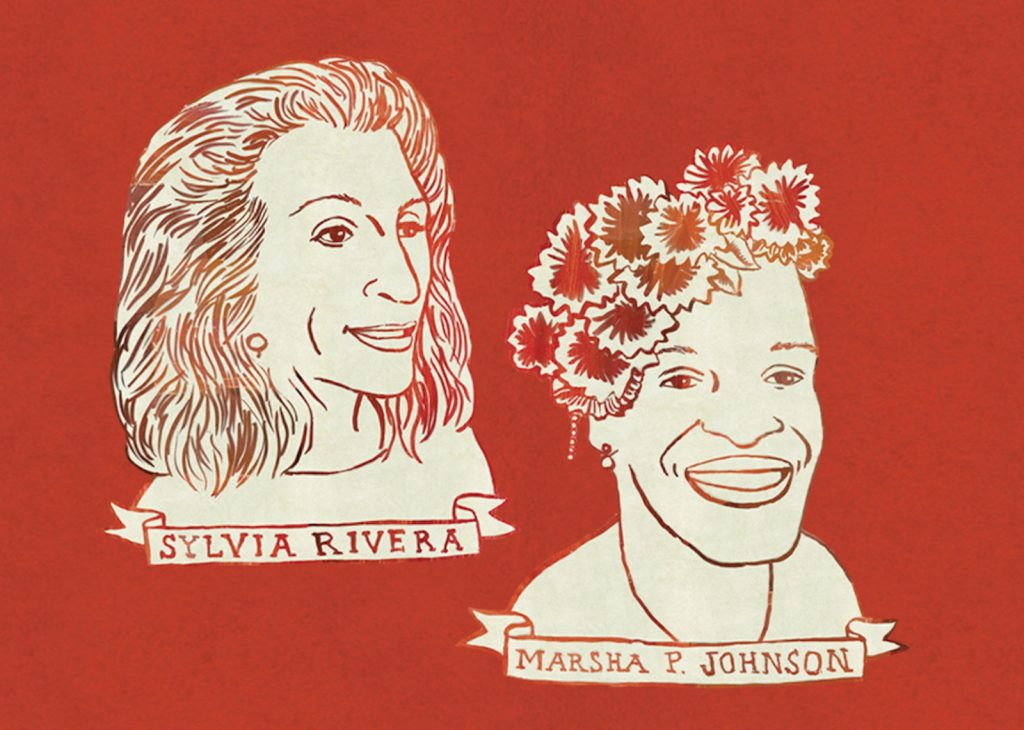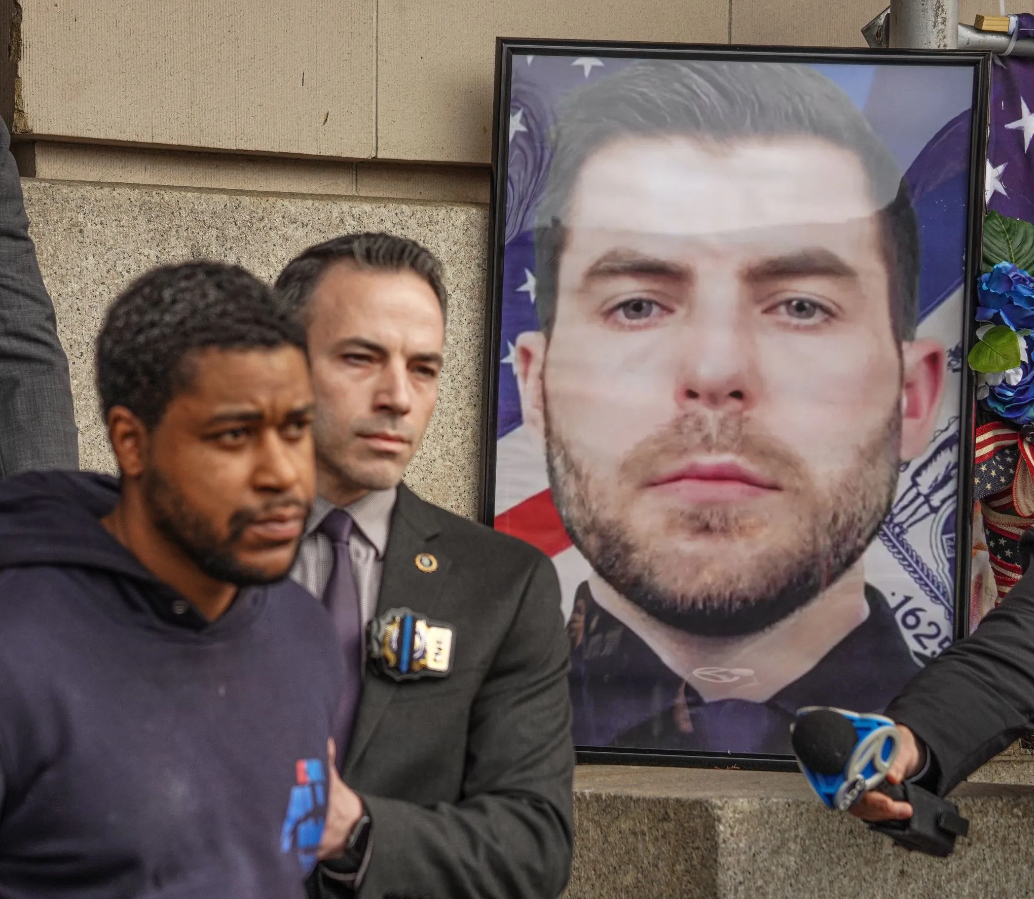BY GABE HERMAN | Transgender activists Marsha P. Johnson and Sylvia Rivera will be getting a monument in the city, with the proposed location in the Village at the Ruth Wittenberg Triangle, Mayor Bill de Blasio and First Lady Chirlane McCray announced on May 30.
The monument is part of the She Built NYC project, which honors pioneering women. It would be the first permanent public artwork in the world to honor transgender women.
Ruth Wittenberg Triangle is blocks away from the Stonewall Inn, now a national monument and where Johnson and Rivera were key figures in the Stonewall Uprising of 1969.

In 1970, Johnson and Rivera cofounded STAR, standing for Street Transvestite Action Revolutionaries. The group provided housing and support for L.G.B.T. street youth, including transgender sex workers.
The first STAR House was in Greenwich Village, and was the first L.G.B.T. youth shelter in North America. STAR was also the first organization in America led by transgender women of color.
Rivera and Johnson were advocates for many causes and marginalized groups, including homeless people, H.I.V.-positive youth, young people of color marginalized in the broader campaign for L.G.B.T. rights, and people with disabilities. They fought for all people to have proper access to healthcare.
Rivera died from liver cancer at age 50 in 2002. She lived on New York’s streets from a young age, after running away from her grandmother at age 11 due to her criticism of Rivera being gender-defying, according to a She Built NYC bio. Rivera worked as a child prostitute before being taken in by a community of drag queens. She told The Villager that she had lived for a time on the Greenwich Village waterfront.
Rivera brought back STAR in 2001 to campaign for the city’s Transgender Rights Bill and inclusion of transgender protections in the state’s Sexual Orientation Non-Discrimination Act, or SONDA.

Johnson was born in Elizabeth, New Jersey. She moved to New York City after high school and struggled with homelessness, but advocated for gay and transgender street youth, along with sex workers and people in prison.
Johnson performed with a drag group called Hot Peaches and was photographed by Andy Warhol.
Her body was found in the Hudson River on July 6, 1992, and her cause of death remains unsolved. She was 46.
“Marsha P. Johnson and Sylvia Rivera are undeniably two of the most important foremothers of the modern L.G.B.T.Q. rights movement. Yet their stories have been erased from a history they helped create,” McCray said. “From their leading role at Stonewall, to their revolutionary work supporting transgender and non-binary youth in our city, they charted a path for the activists who came after them. Today, we correct the record. The city Marsha and Sylvia called home will honor their legacy and tell their stories for generations to come.”
De Blasio declared the monument would “send a clear message.”
“Transgender and non-binary communities are reeling from violent and discriminatory attacks across the country,” he said. “Here in New York City, we are sending a clear message: We see you for who you are, we celebrate you, and we will protect you. This monument to Marsha P. Johnson and Sylvia Rivera will honor their pioneering role in the fight for human rights in our city and across the world.”

“I have been waiting decades to see these trans revolutionary women honored,” said Tanya Asapansa-Johnson Walker, cofounder of the New York Transgender Advocacy Group. “They were on the frontlines of the gay movement and deserve this honor.”
The statues for the monument will reportedly cost about $750,000, and come out of $10 million that de Blasio has allocated for new public artworks. The city has issued an open call, with a deadline of Oct. 1, for artists interesting in creating the monument.
The traffic island bounded by Greenwich and Sixth Aves. and Christopher St., was named for legendary activist Ruth Wittenberg in 1990. Wittenberg served on Community Board 2 for 40 years and was part of the effort to close the Women’s House of Detention and create the Jefferson Market Garden on its former site. She is commemorated by a small plaque in the triangle’s pavement.

















